Beauty of Silk: Different Types of Silk in India
The magnificent and diverse land of India is home to different types of silk. Indian silk with all its splendour and grandeur stands out for its smooth texture, shimmering appearance and aesthetic appeal. Since time immemorial, silk has been enticing Indians, particularly women.
All the celebrations and auspicious occasions in India are not complete if you are not dressed in the most exquisite silks. In fact, at most of Indian weddings, right from the couple getting married to the majority of the guests are dressed in the finest of silks. The shimmering fabric adds a regal touch to the overall appearance. In short, silk forms an integral part of all celebrations in the rich Indian culture.
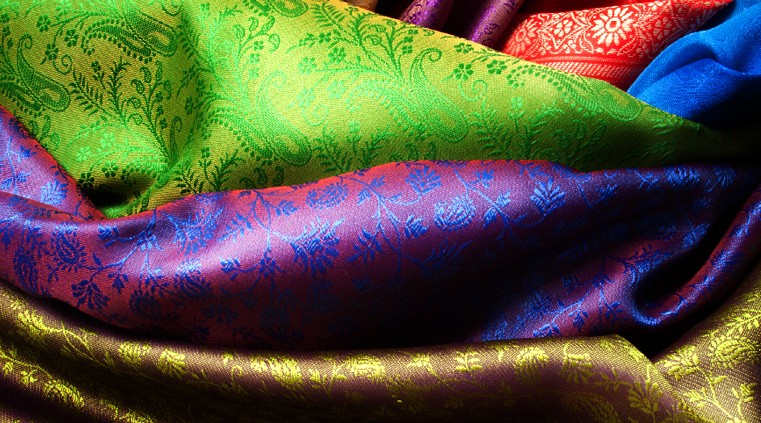
Knowing this, it should not come as a surprise that India ranks as the biggest consumer of silk in the world. More than 75% of the consumption is in the form of silk saris and the silk industry must thank the Indian women for their elegant taste in silk. India is the second-largest producer of natural silk after China and is the only country that produces all kinds of natural silk: Tasar, Muga, Eri, Mulberry, and Oak Tasar.
What is more fascinating is that in India, every region in the country produces its own unique kind of silk. Isn't that amazing? Silk fabrics are woven from different kinds of natural silk produced in the country. Technically, there are four kinds of silk produced in India based on the silkworm used for silk production.
In this blog post, we offer you a glimpse of the different types of silk produced in India and some of the most popular silk fabrics weaved in the country:
Different Types of Silk in Different Parts of India
There are four types of natural silk that are produced in India. These are Muga silk, Eri, Tussar and Mulberry silk. Among all these four varieties of silk, mulberry silk contributes to more than 80% of the silk produced in the country. That's why most often the Indian silks are categorized as mulberry silk and non-mulberry silks that consist of the other three varieties. Let's know about them in detail:
Assamese Muga Silk
Muga silk is one of the rarest varieties of wild silk that is geographically produced in the state of Assam in India. Renowned worldwide for its lustrous, glossy texture and extreme durability; mMugasilk was once reserved only for royalty. Considered one of the most expensive varieties of silk produced in the world, Muga silk is often compared to being as expensive as buying gold.
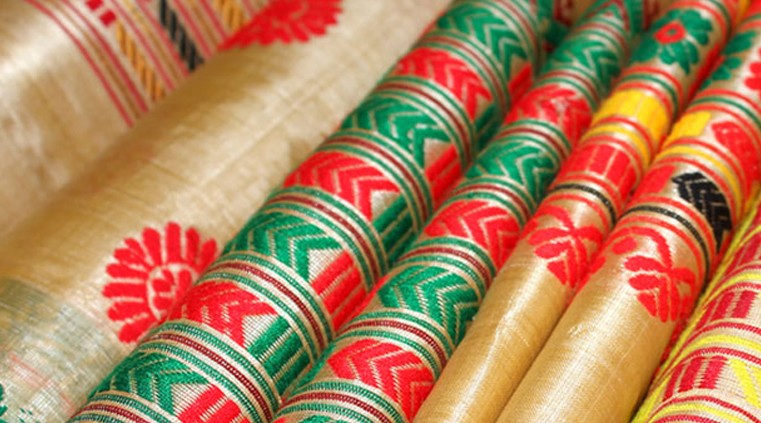
Produced from the larva of a silkworm known as Assam silkmoth, Muga silk has a distinct natural yellowish-golden tint. Thus, the name Muga which yellow in Assamese.
This luxurious form of silk is weaved into intricately designed mekhalas and chadors (traditional Assamese wear for ladies), saris, kurtis, and so on. The traditional motifs and the elaborate patterns weaved on the silk fabric further add to its splendor and the ever-growing demand.
What is fascinating about Muga silk is that its lustre is enhanced after every wash. Muga silk is also known for its longevity. Interestingly, it is believed that the muga silk fabric lives longer than its wearer.
Eri Silk (Peaceful Silk of Assam)
Eri silk (also known as Endi or Errandi) is processed from the open-ended cocoons of the domesticated silkworms which are mainly found in Assam and other parts of North-East India. The name eri has originated from the Assamese word "era", which means "castor", as these silkworms feed on castor plants.
The most fascinating aspect of this woolly white silk is that it is obtained without killing the silkworm. That's why, eri silk is also known as Ahimsa silk (non-violent silk or peace silk). This is the prime reason that this peace silk is highly popular among vegans and the Buddhist monks of India, Nepal, Japan and China.
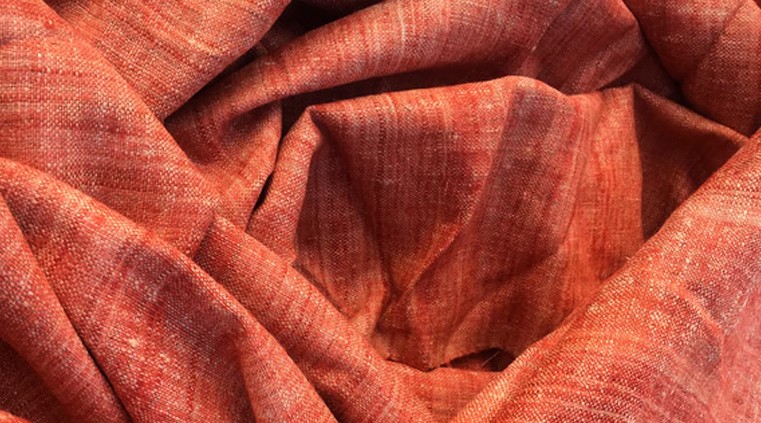
It is characterized by its coarse texture, durability and has dull golden yellow sheen. As eri silk is heavier as compared to other types of silks and blends well with wools and cotton, it is generally used to make bedspreads, wraps, shawls, and quilts. These days, even saris are being produced out of this silk.
Due to its unique thermal properties, eri silk is cool in summer and warm in winter. In other words, eri silk boasts of the grace of silk, the comfort of cotton and the warmth of wool. As eri silk is not as costly as other varieties of silks; it is often termed as poor man's silk.
Tussar Silk
This centuries-old tussar silk (also spelt as tassar, tussur, tusser, or tasar silk) is also called as Kosa silk in Sanskrit. India occupies the second position as the producer of tussar silk and is the exclusive producer of Indian Tussar (also called as tropical tussar). Majority of the tussar silk is primarily produced in Bhagalpur in Bihar and the other Indian states of Madhya Pradesh, Odisha, Chattisgarh, West Bengal, Maharashtra and Jharkhand. In the recent times, Jharkhand has come up as the biggest producer of tussar silk. The Oak Tusar silk is a finer variety of the Tasar silk that is also produced in India.
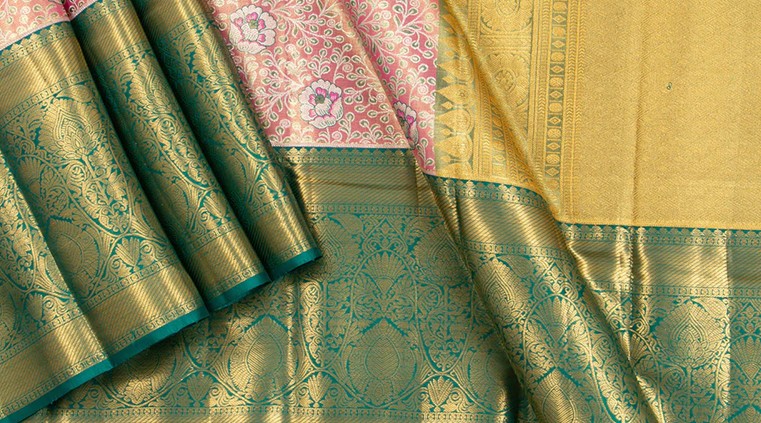
In Bhagalpur, tussar silk is also known as Bhagalpuri silk. It is famous for its rich texture and natural deep gold color and is widely used in creation of Tussar silk sarees and silk salwar suits. As tussar silk is cooler than the other varieties of silk, this makes this type of silk conveniently wearable in hotter parts of the world. Indian fashion designers like Sabyasachi and Manish Malhotra have always experimented with this fabric.
Mulberry Silk
Mulberry silk is the most exquisite and the highest quality of silk produced in India. About 97% of the raw mulberry silk comes from the six Indian states which are: Tamil Nadu, West Bengal, Andhra Pradesh, and Jammu and Kashmir, Karnataka, and Bihar.
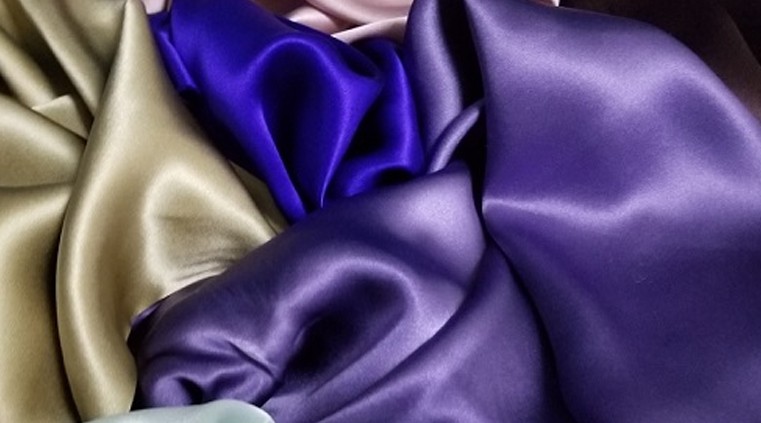
Mulberry silk is made from domesticated silkworms, the particular type of moth, the Bombyx mori that eat only mulberry leaves, hence the name mulberry silk. These moths produce a strong, pure white fibre for their cocoons and ultimately the fibre from these cocoons convert into a smooth textured fabric. Mulberry silk is one of the strongest natural fibres in the world. Due to its fine texture and glossy sheen, saris weaved from the Mulberry silk are in huge demand.
Except the mulberry silk, all other varieties of silks are described as Vanya silks or non-mulberry silks as the silkworms producing these silks are semi or non-domesticated.
Significant regions of silk:
Let's have a look at some of the significant regions that produce the finest of silk and the silk saris that are world renowned for their richness and magnificence.
Banarasi Silk
Banarasi silk (also spelt as Benarasi) is considered as one of the finest varieties of silk produced in the country. Renowned all over the world for their magnificence and beauty, Banarasi silk saris are mostly weaved in the ancient, Holy city of Varanasi (or Banaras) in Uttar Pradesh, India.
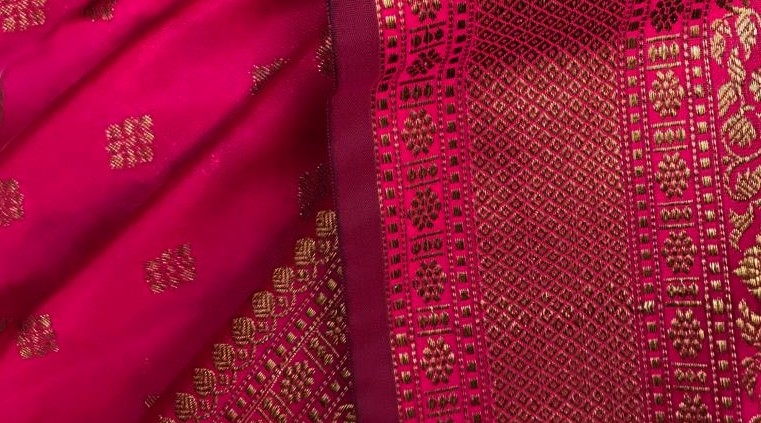
With its intricate designs, vibrant colours, and beautiful zari work in gold and silver threads, a Banarasi silk sari inevitably finds a place of pride in the trousseau of every Indian bride.
A Banarasi silk sari is an epitome of richness and sophistication! Depending upon the complexity of the rich patterns and designs, a Banarasi sari can take from 15 days to a month and sometimes even six months to complete. Be it a wedding function to attend, an engagement ceremony or some other royal event; a Banarasi silk sari is the absolute showstopper!
Kanjeevaram Silk (Kanchipuram)
Kanjeevaram silk traces its origin to the Kanchipuram town in Tamil Nadu. Made from the finest of mulberry silk threads; the Kanjeevaram silk is celebrated for its glossy shine, strength and opulence!
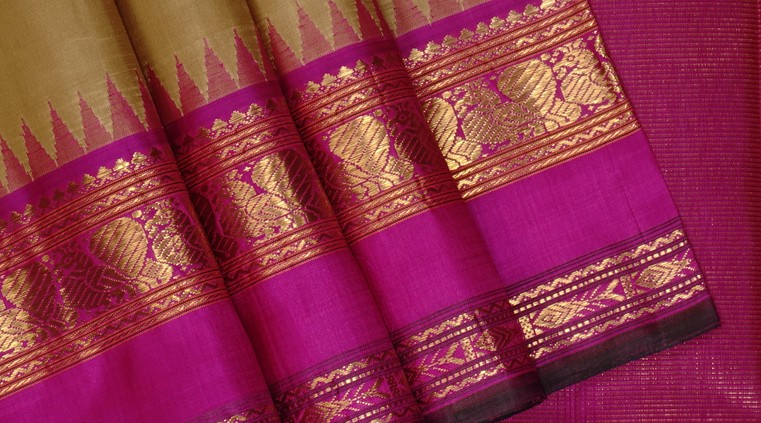
With its intricate weaving patterns, attractive broad borders, vibrant hues and captivating patterns and designs and most importantly the quality of the silk; the Kanjeevaram silk stand out from others be it in India or all over the world. No wonder, Kanjeevaram silk sarees are one the most revered silk sarees not just in India but all across the world. The uniqueness of this silk sari is that the border (pallu) and the body are woven independently and joined later.
In fact, considering the beauty of Kanjeevaram silk and the efforts that go into make this masterpiece, in 2008, the noted Malayalee film director Priyadarshan made a Tamil film Kanchivaram. The film put focus on the silk weavers of the town during the pre-independence period. The film won the Best Film Award at the annual National Film Awards.
Assam silk
Since time immemorial, Assam has been well-known for the production of the highest quality silk. The Indian state of Assam takes pride in the fact that in Assam three varieties of indigenous wild silks are produced: Muga, white pat and eri silk. The pat silk has brilliant white or off-white colour and is light-weight and delicate in texture. Mekhela chadors are made with finest of muga silk that form the traditional attire worn by the women of Assam.

Mysore Silk
In Karnataka, mulberry silk is chiefly grown in the Mysore district. The Indian state of Karnataka produces 9,000 metric tons of mulberry silk, ultimately contributing to almost 70% of the country's total mulberry silk production. Mysore silk is distinguished for its durability and radiance.
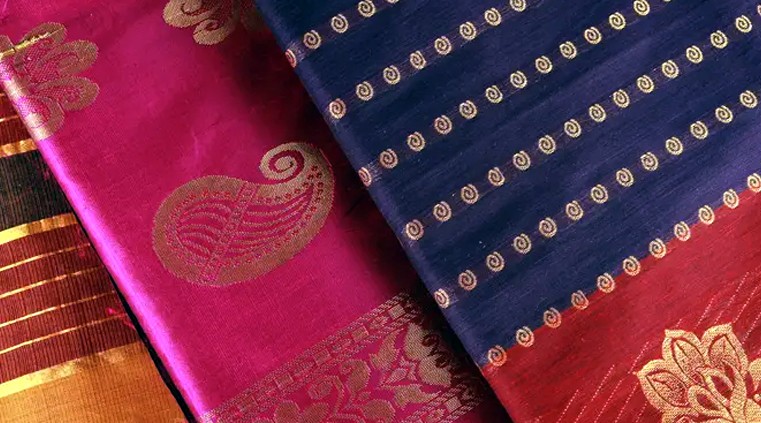
What makes Mysore silk saris so unique is the fact that the pure gold zari work is meticulously done on the single-toned sarees with golden borders. The luxurious Mysore silk is widely used to create beautiful silk saris, kurtis, silk stoles, scarfs, shawls, pyjama kurtas and dhotis.
The Beauty of Silk!
In fact so precious was silk that, for centuries, the production of silk was a closely guarded secret in China. The sumptuous silk fabric is a symbol of luxury, power and class in India! No wedding or ceremony is complete without the flaunting of the rich, luxurious silk that personifies grandeur!
Latest Posts
Categories
Tags


 +1-403-351-7777
+1-403-351-7777














